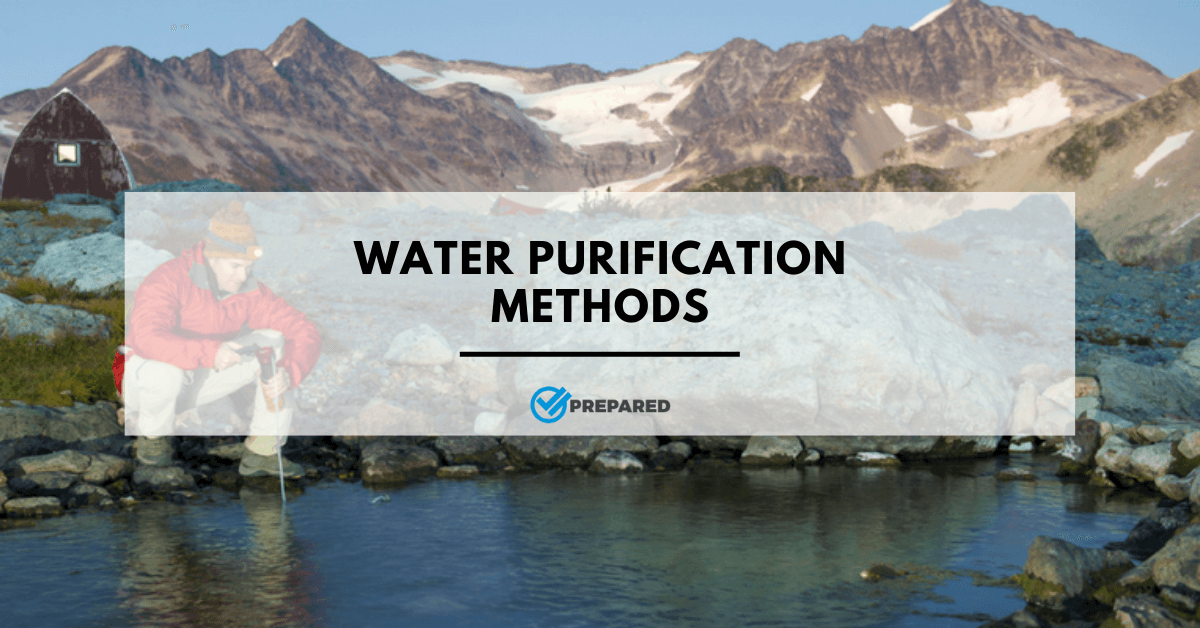Dehydration is one of the most serious concerns in a survival situation. Statistically more people die of hypothermia. However, dehydration can accelerate the onset of hypothermia along with several other life-threatening issues. The body needs water to function properly in any situation. Under normal conditions, a person will die from dehydration in three days without water. However, in extreme heat or with added exertion one may expire in just hours.
Contaminated Water
The other issue with hydration is that most of the water available in the wild cannot safely be consumed. Saltwater will speed up dehydration unless a desalination process is used. Most of the fresh water on the planet is infected with dangerous bacteria and microorganisms. Drinking this water will not kill you immediately, but within a few days, it can cause uncontrollable vomiting and diarrhea, which can speed dehydration and can cause death.
Water can also be contaminated by chemicals or mineral deposits. In most land situations, water can be found with a moderate amount of effort. Most of the earth has rivers, lakes, ponds, and streams that hold water year-round. Areas that are dry, normally have low spots where wells can be dug. So how do we purify the water before drinking it? This is what I intend to cover in this post.
Warning: Consider the Situation
These are basic survival methods used to save a person’s life. No water purification method is 100%. These methods should only be used in severe dehydration situations. However, I can say that I have used them all and have never gotten sick afterwards. I am going to briefly cover methods to purify water in order from highest purification rate to lowest. I also factored in functionality.
This is all a relative science. If you are drinking water below a chemical plant or a coal mine, then debris and chemicals are the biggest concern. If you are drinking from a watering hole in Africa, bacteria and microorganisms are the biggest concern. You must use your best judgment to determine which method makes the most sense.
Water Purification Methods
Here is an overview of 6 water purification methods:
Boiling – Bringing water to a boil is one of the oldest methods used and one of the most effective. Bringing water to a boil kills bacteria and microorganisms, but does not eliminate debris or chemicals. It should also be filtered if possible.
Chemical Purification – If you have the time to wait, both bleach and iodine can purify water. Just a few drops of either in a gallon will kill bacteria and microorganisms. However, it does not remove debris. I prefer to carry iodine tablets, but they take a full 35 minutes to be fully effective. You can also use sphagnum moss for chemical purification as its liquids will kill most bacteria and microorganisms.
High-Grade Filter – This would include straw filters, pump filters, and filter bottles. These filters are designed to remove a very high percentage of all contaminants. However, they can be bulky and expensive. Like anything artificial, filters can break and would be deemed worthless. I prefer a steel bottle with a filter built into the lid. This allows me to boil water as well.
Homemade Filter – The key to this construction is charcoal from your fire. Use a plastic or glass bottle and layer gravel, sand, and charcoal with a fabric layer over the top. The layers will filter out debris, microorganisms, chemicals, and some bacteria.
UV Purification – By putting water in a clear plastic bottle and laying it out in direct sunlight, the UV rays will kill most bacteria and microorganisms. However, it must be a sunny day, and the water must be crystal clear. It should also be filtered if possible. You can also consider using a UV purifier.
Proximity Well – As a last resort you can dig a well near your water source. The reason it is typically safe to drink from a spring is that the earth has purified the water. If you dig a well several feet from the edge of your stream or lake, the water should eventually start to seep in. Be sure to let the debris settle to the bottom before you drink.
Preparedness for Water Purification
Keep in mind that the best way to stay hydrated in the wild is to take water with you. Carrying gallons does not make sense in most cases, but having a bottle or two is smart. Aside from that option, most of these methods require some tool, product, or container. Only a well-assembled pack will keep you prepared. You should never rely on just one method of water purification. Given how important clean water can be, I normally have at least three or four ways to get clean water.
ALSO SEE: 7 Types of Water Filters Explained
However, if you are in desperate need, you may have a choice to make. I would never suggest drinking contaminated water unless there is no other option. However, when dehydration is setting in, and you feel your hours are numbered, there may be no choice. Getting sick with giardia in several days is a better option than dying from dehydration today. Your best choice is to avoid that situation in the first place.
Survival Water Purification Methods: Do you want to learn more about including water in your preparedness plans? Look at this water survival guide. Alternatively, if you are more interested in water purification equipment, take a look at this water bottle with a built-in UV purification system.

Chris was born and raised in South Africa and has worked in the field of risk management, organisational resilience, and business continuity for more than a decade. During his career he has seen how private and public sector organisations benefit from effective risk management and business continuity planning. Realising that families and communities can also benefit from the same tools, methodologies, and principles, he started Prepare with Foresight.
Prepare with Foresight was launched to assist individuals and families to have the peace of mind that they will be able to recover from and successfully adapt to the consequences of adverse events.

